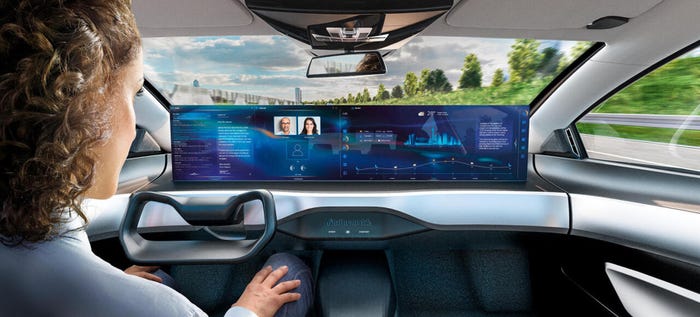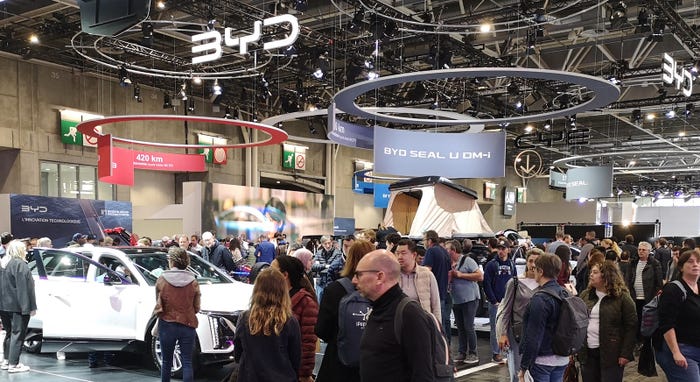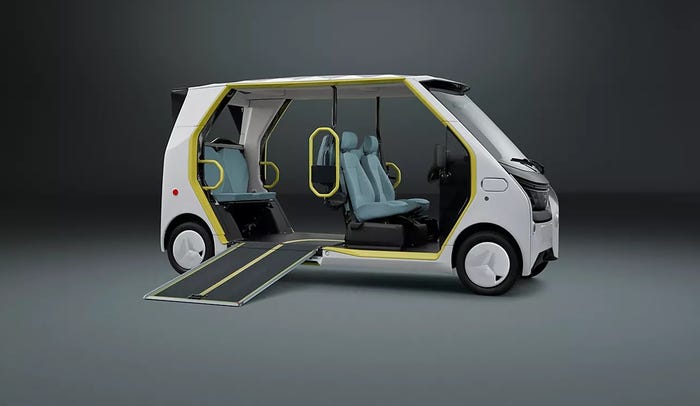NXP’s CoreRide Provides Missing Piece for Future SDV Architectures
The chipmaker, collaborating with a long list of software partners, has put together a plug-and-play platform designed to let automakers move to next-generation electrical/electronic architectures more quickly and efficiently.

DETROIT – Chip supplier NXP is looking to complete the puzzle that is the software-defined vehicle by offering automakers a plug-and-play solution for their next-gen vehicle architectures.
To date, when it comes to SDVs, most of the industry’s focus has been on processors, software and other hardware designed to support infotainment and ADAS/autonomy systems, making sure those vehicle domains have the required compute capacity, connectivity, performance and updatability to meet customer requirements throughout the life of the vehicle.
But for a car to be fully software defined, there are many more core functions of the vehicle – routine body systems, for example – that need to be consolidated and addressed by these new architectures.
That’s where NXP’s new S32 Core Ride processing, vehicle networking and system power management platform comes in. The NXP S32N processors that are at the center of the S32 CoreRide technology are aimed at supporting all the functions other than infotainment and ADAS. And thanks to a collaboration of ecosystem partners, the S32 CoreRide comes packed with the base software needed to allow automakers to hit the ground running when developing their new SDV architectures.
The list of collaborators includes Accenture ESR Labs, ArcherMind, BlackBerry QNX, Elektrobit, ETAS, Green Hills Software, Sonatus, Synopsys, TTTech Auto, Vector Informatik, Wind River and Tier 1 supplier Valeo.
When it comes to future SDV architectures, there isn’t a one-size-fits-all strategy for automakers. Many startup companies have gone to a centralized computer to control all the critical functions of their new vehicles, but many legacy automakers have been slower to make the leap from current architectures that can utilize up to 150 or more function-specific electronic control units all the way to a single powerful central computer for their next-generation vehicles.
The in-between options are myriad, NXP points out, from flat architectures to domain-focused to zonal to hybrid to fully centralized – and executives here this week at a media backgrounder believe this hodgepodge of architectural strategies is likely to remain in play indefinitely. As a result, the CoreRide platform is designed to work seamlessly in all those architectural configurations, meaning production will be able to scale up to efficiently meet demands required by everything from a zonal- or domain-centric application to a high-powered single, central processor.
Deploying CoreRide ultimately will save automakers time and money, NXP says, because the plug-and-play nature of the technology will enable OEMs to eliminate time spent on more generic operating software and integration and focus more engineering capacity around functionality that will differentiate their brands and open up new revenue streams. NXP estimates OEMs will improve their own engineering efficiency 25%-30% by adopting CoreRide.
In a demo of the technology, NXP shows a scenario in which, using several S32N processors in a domain-based architecture, an automaker could offer vehicle owners new personalization and performance features through over-the-air downloadable software packages they agree to purchase. NXP says on average, OEMs – some of which predict the digital-economy will add tens of billions of dollars to their revenue annually – are planning to offer 40-60 such upgrades over the life of a vehicle.
“The automotive industry’s shift to software-defined vehicles presents unprecedented levels of disruption,” says Henri Ardevol, NXP’s executive vice president and general manager of automotive embedded systems. “In the last decade, many industries have successfully adopted faster innovation cycles and effectively achieved higher performance at lower cost through tight integration of silicon and software. With NXP’s S32 CoreRide platform, automakers can now radically transform their approach to SDV development by adopting a much faster, open development path.”
Of course, with disruption comes opportunity, NXP executives point out. And that means its competitors are likely to move in a similar fashion. But for now, it looks like the chipmaker, with the ecosystem it has assembled with other software partners, may have a step up in offering automakers a one-stop solution to completing their SDV architectural roadmaps.
About the Author
You May Also Like



.jpg?width=700&auto=webp&quality=80&disable=upscale)

